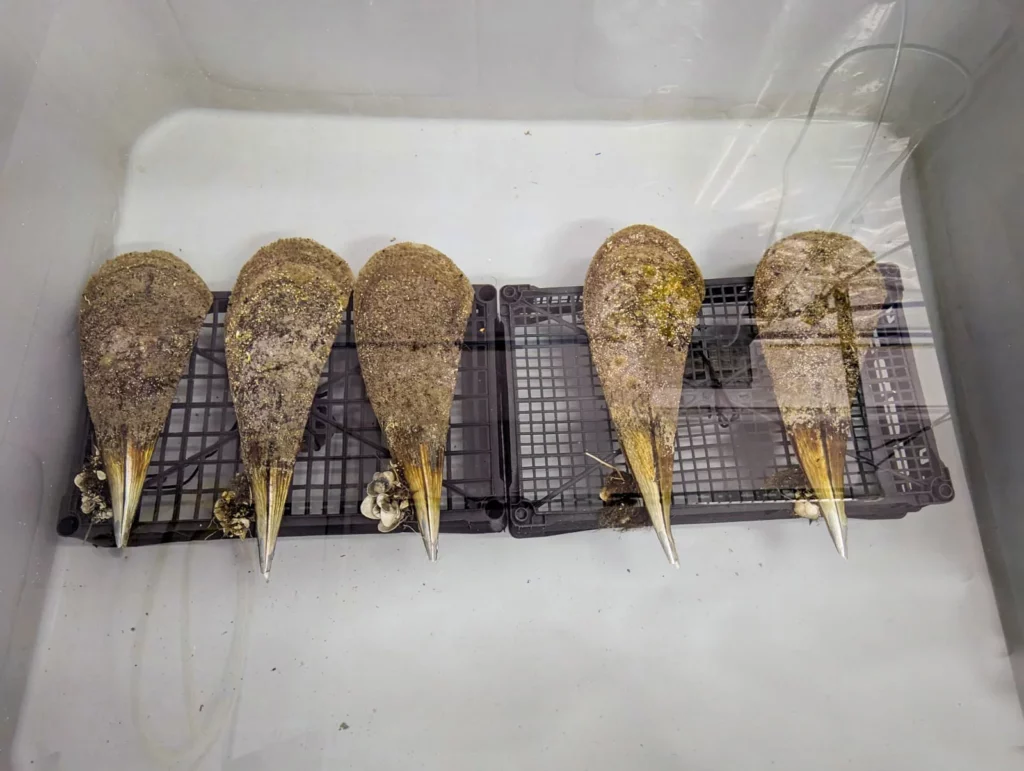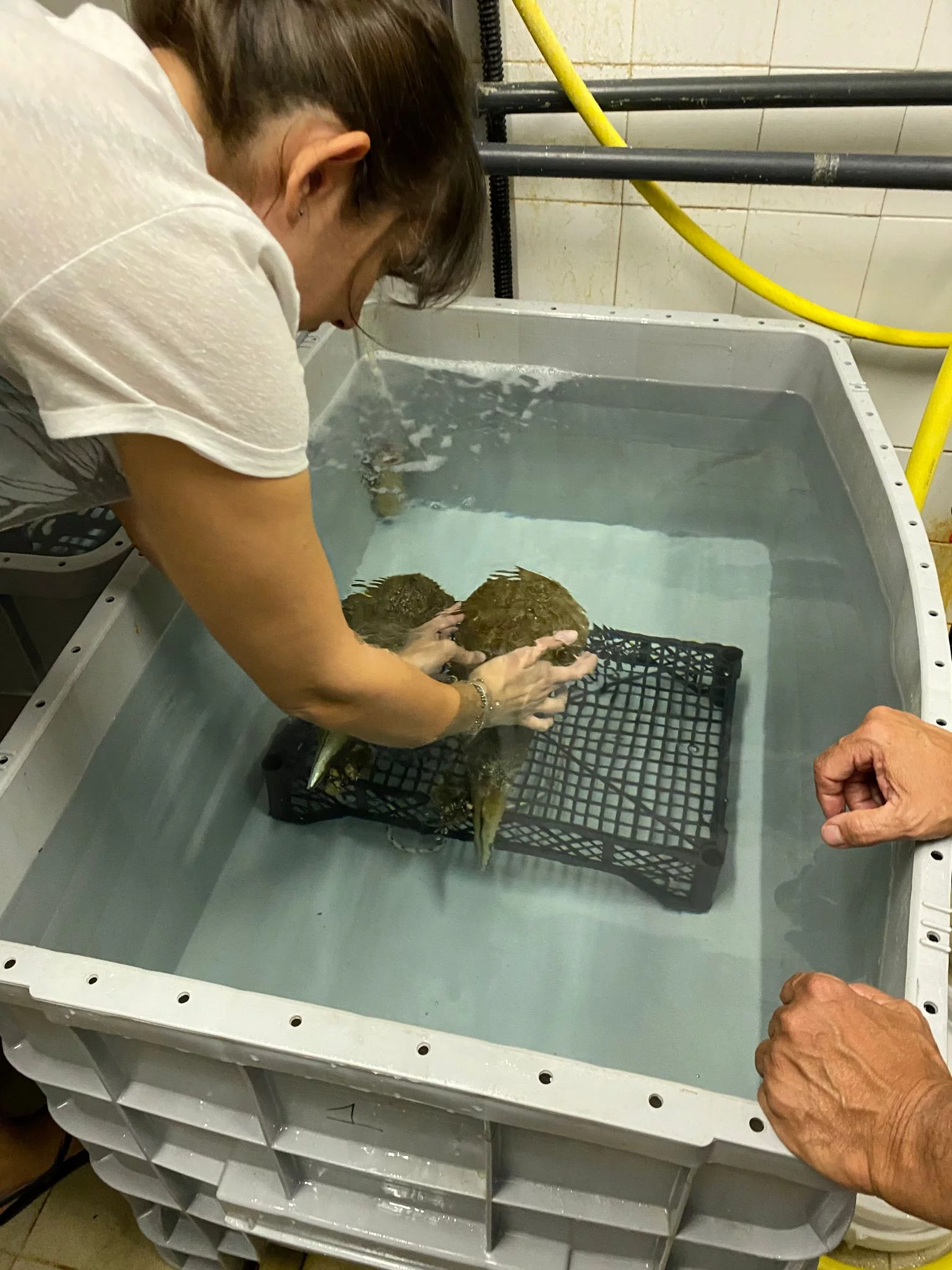At the beginning of June, researchers from Shoreline, thanks to the report and help of some colleagues from Laguna Project and CNR ISMAR Venice, conducted a boat reconnaissance in the Venetian Lagoon near an old abandoned mussel farm, where they verified the presence of a plentiful population of Pinna nobilis in good health.
On Monday, June 19, the researchers returned to the site and with great caution, collected 11 specimens that were at least 2 years old (thus measuring at least 20-25 centimeters in length and already sexually mature) to then transfer them, aboard a refrigerated van, to the laboratory of CNR-IBF in Camogli, entrusting them to the care of the researchers from the University of Genoa who manage the breeding facilities. It was therefore an important day, also because, technically speaking, this operation represents a “milestone,” a significant milestone in the project.
*The LIFE PINNA project was able to carry out the collection action thanks to the authorization received from the competent Ministry.
Before transferring them to their tanks, researchers from the University of Genoa progressively added “Ligurian” seawater to the containers of the Pinna specimens from the Adriatic, in order to acclimate them and get them used to the new temperature and salinity conditions.

While waiting for the analysis to be conducted in the coming months on the Pinna specimens from the Venetian Lagoon to verify the absence of dangerous microorganisms and genetic compatibility with the Tyrrhenian and Ligurian populations (essential factors for proceeding with the transplantation in the pilot sites of Capo Mortola and Asinara), the researchers from the University of Genoa will focus on refining the captive reproduction techniques of Pinna nobilis, a crucial activity for the success of the LIFE project.
Furthermore, pending the report on pathogens, the culture water is subjected to sterilization both when taken from the sea and when disposed of, thereby preventing the potential dispersal of harmful microorganisms.

